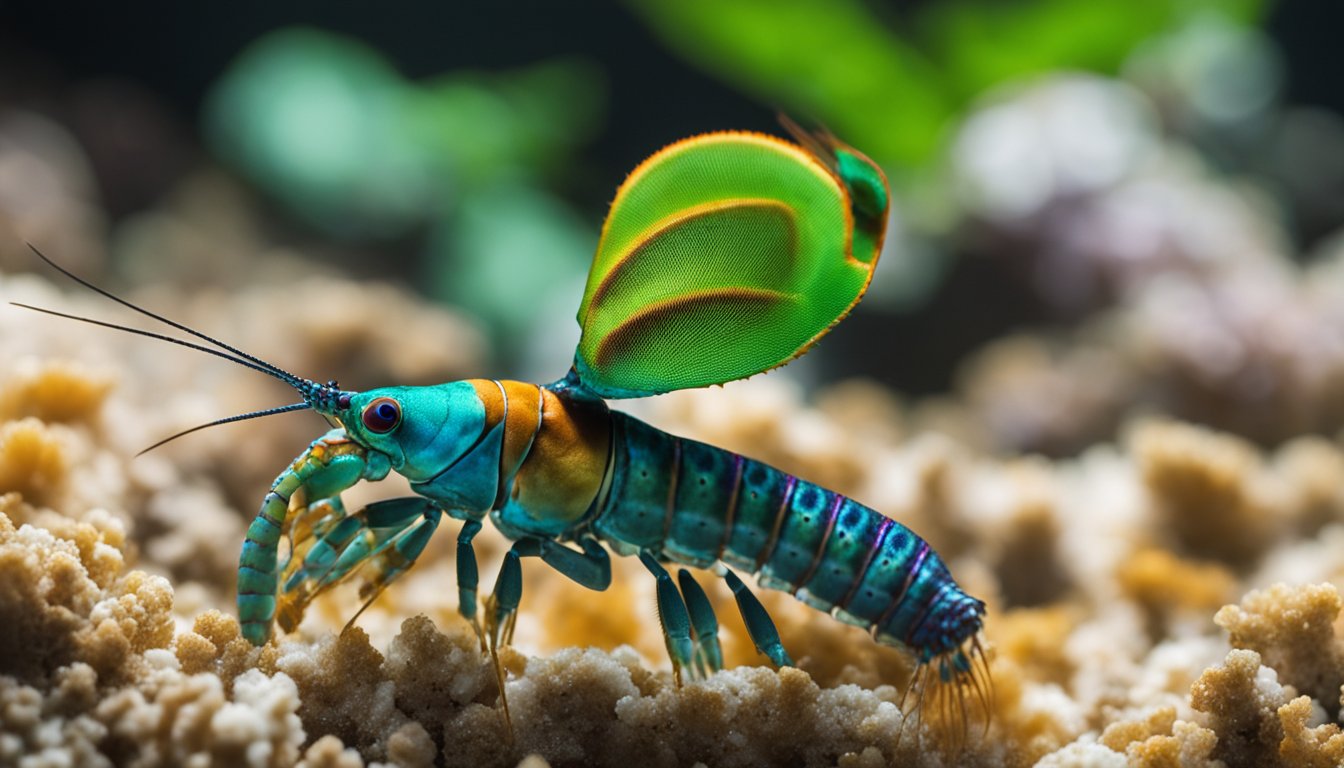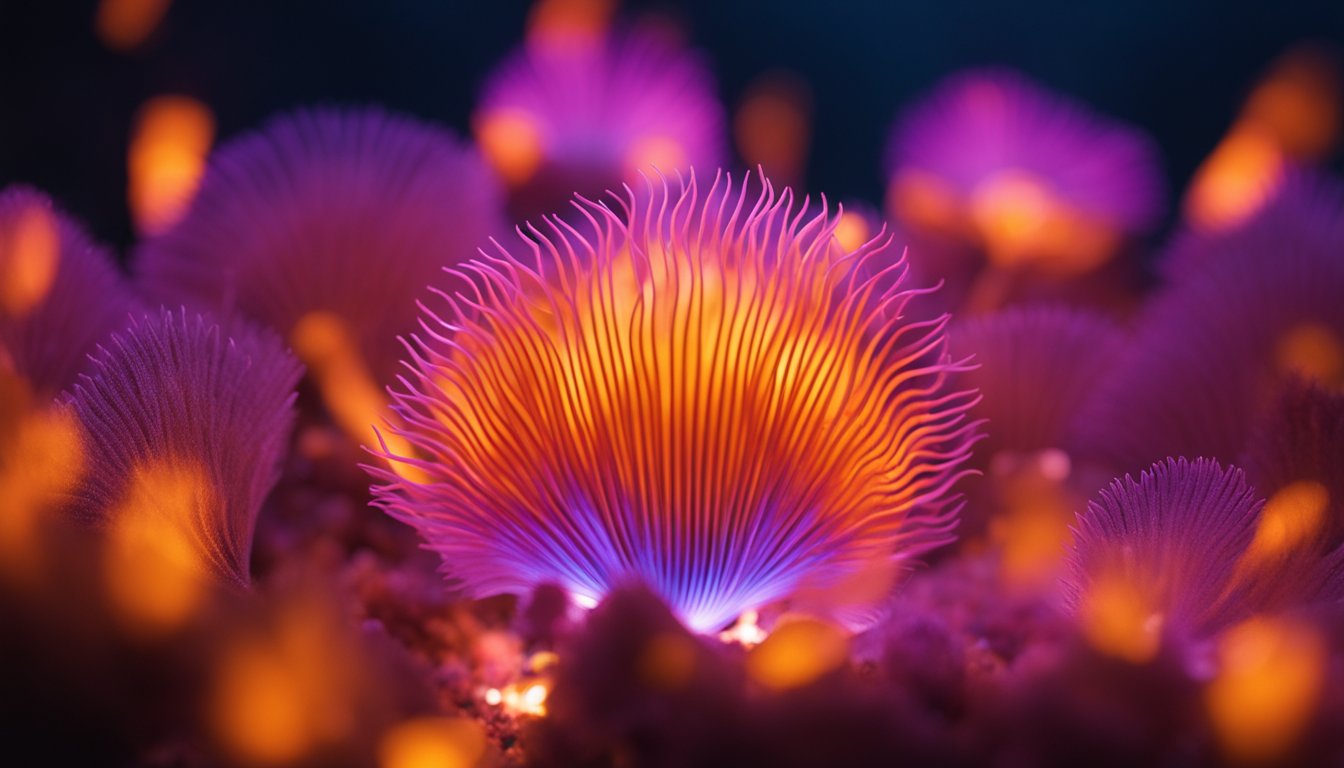Have you ever heard of the zebra mussel?
These little creatures are about the size of a fingernail, but don’t let their size fool you – they are quite the travelers!
Originating from lakes in Russia and Ukraine, zebra mussels have hitchhiked all the way to lakes and rivers across Europe, and even to the United States and Canada.
It’s like they’re on a world tour!
But unlike tourists who take pictures and leave nothing but footprints, zebra mussels can cause a big fuss in their new homes.

When we talk about zebra mussels, we’re not just talking about their love for travel.
These guys are known for sticking to surfaces as if they’ve found their favorite spots and simply refuse to move!
Imagine a tiny creature that clings so tightly that it can block water pipes and even damage boats. That’s some serious mussel power!
What’s really interesting is the pattern on their shell – it’s striped like a zebra hence their name.
Now, that’s a cool fashion choice for a mussel, don’t you think?
But it’s not all fun and games with the zebra mussels. They can be quite the problem for our water buddies and us.
They munch on algae that other species need as food.
It’s a bit like someone coming to your house and eating all your snacks, leaving nothing for you – not very nice, is it?
This is why scientists keep a close eye on zebra mussels so they can understand better how to keep our rivers and lakes healthy and full of life.
Isn’t it fascinating how such small creatures can teach us so much about caring for our environment?
What Is a Zebra Mussel?

Before we dive in, let’s get to know the zebra mussel, which is both an intriguing creature and a bit of a troublemaker in our waters.
They’re small, but they cause big changes wherever they go.
Defining Characteristics
Imagine a tiny striped shell no bigger than a fingernail. That’s our zebra mussel.
These little guys have a distinct pattern of dark and light stripes, just like a zebra’s coat.
Their shells are triangular and can grow up to about 2 inches long, although most hang around the size of a dime.
Habitat and Spread
Zebra mussels really love fresh water, and they’re found in many of our lakes and rivers.
Originally from Eastern Europe and Western Asia, they hitched a ride to us in the late 1980s, likely by clinging to the sides of boats.
Since then, they’ve spread to numerous waterways, making themselves quite at home.
They can survive by attaching to different surfaces, and our boats and docks often become their new neighborhoods.
Ecological Impact of Zebra Mussels

Let’s dive into how these little critters affect our ecosystems.
We’re going to see how they shake things up in our waterways and what they mean for our local critters.
Effects on Waterways
Imagine our waterways like a giant fish tank that’s not been cleaned for a while. When zebra mussels move in, they act like tiny vacuum cleaners.
These mussels filter water to feed, taking out lots of particles, including algae. Sounds helpful, right?
But when there are too many of them, they can filter so much water each day that it becomes too clean.
It’s like when our windows are so shiny that birds might bump into them; it’s not always as good as it sounds.
With less algae, there’s less food for other animals, and sunlight can reach deeper parts, sometimes making way for plants that shouldn’t be growing down there.
These changes to the water can be a bit like a mixed-up recipe – they might not taste great for everyone.
Influence on Native Species
Now, let’s imagine a schoolyard where a new kid arrives. This new kid, the zebra mussel, is super popular and takes all the best toys.
Our native species find this pretty tough. These mussels attach to and crowd out native mussels, and they love clinging onto the surfaces of our native plants and animals, too.
This is tough for the locals who were there first and can’t find enough space or food now.
We’re seeing some of our old buddies struggling because these zebra mussels are really good at playing the game of survival.
These little mussels are not just hogging all the resources; they can also bring in unwanted guests.
They might clog our pipes, which is like blocking the slides in our schoolyard – not fun for us who need the water to flow!
Through exploring the wonders of zebra mussels, we’re learning just how much of an impact one small creature can have on an entire community.
Like ripples in a pond, their presence spreads far and wide, who knew such little shells could cause such big waves?
Human Encounters and Economic Cost

Our waterways are vital to us, and the zebra mussel is one creature that has really made a splash in them—not always in the best way.
Let’s explore how managing this little shelled stowaway has turned into quite the adventure and see just how our wallets are feeling the pinch.
Challenges in Management
Managing zebra mussels is like trying to keep a lid on a jar full of fireflies on a summer night—it can be pretty tricky to control those little light-up bugs!
These mussels hitch rides on boats and spread to new waters faster than a cat video on the internet.
We’ve tried different ways to keep their numbers down, like cleaning boats thoroughly before moving them to different waters and installing special screens in pipes.
But these sneaky critters are survivors, and despite our best efforts, they keep popping up all over the place, creating real headaches for folks who take care of our lakes and rivers.
Economic Impact
When it comes to the economy, zebra mussels have a way of sticking their little noses—or bivalve shells—into our business and causing quite a stir.
They glom onto everything from pipes in power plants to the hulls of boats, and getting rid of them is like trying to pick a thousand stickers out of a wool sweater.
It’s painstaking work, and it sure isn’t cheap!
It’s estimated that these unwelcome visitors cost the power industry alone $3.1 billion from 1993 to 1999 in the United States, with their shenanigans continuing to rack up similar bills year after year.
From clogging up the works in water treatment facilities to putting a damper on fishing by gobbling up food sources for fish, zebra mussels have proved that being small doesn’t mean you can’t have a massive impact.
Controlling the Spread

Our mission, dear friends, is to tackle the challenge of keeping zebra mussels in check.
Let’s embark on a thrilling quest to unsnarl the tactics and techniques that help keep these clingy critters from hitching rides to new homes.
Preventative Measures
In our first adventure, we focus on dodging the zebra mussel before it begins its invasion.
Just like superheroes setting up shields, we too have our trusty defenses.
We have to be extra careful when we move boats, gear, and equipment from one body of water to another.
Think of each lake or river as a unique treasure that we don’t want to mix up with another.
Before we zip from one aquatic playground to another, we always make sure to clean our gear thoroughly with hot water, dry it completely, and throw a keen eye on nooks and crannies where these little stowaways might hide.
A secret trick up our sleeve is to treat water with specific chemicals that make it a less inviting place for zebra mussels.
We’re like wizards carefully selecting our potions to protect our watery realms without harming other critters that live there.
Removal Techniques
Once our uninvited guests settle in, however, we become nature’s ninjas, employing sneaky removal techniques to guide these mussels away.
Manual removal is a straightforward way to do this. Donning gloves and armed with tools, we scrub and scrape off the mussels from surfaces.
It’s like we’re gardening, only we’re underwater and the plants are actually tiny animals!
Another clever tactic involves installing special screens that prevent smaller mussels from getting into water treatment plants and power stations.
Picture these screens as secret agents, blocking the bad guys from getting through.
Now, this might sound like a fish tale, but we can also introduce certain fish that see these mussels as a tasty snack.
It’s a win-win: fish get a feast, and we get fewer mussels.
But it’s super important that we’re careful; introducing new species can sometimes lead to more problems.
So, we only enlist these fishy friends when we’re sure it’s safe.
Through wit, caution, and a splash of daring, we work tirelessly to control the spread of zebra mussels.
It’s a big job, but together, we’re making waves in protecting our waters from these slippery invaders.
The Science of Zebra Mussels
Let’s dive into the fascinating world of zebra mussels, where we’ll uncover how these little creatures reproduce and adapt to new environments.
Reproductive Biology
Zebra mussels have a pretty impressive way of creating large families.
Did you know that a single female can produce over a million eggs in one breeding season? That’s a lot of baby mussels!
These eggs are then fertilized in the water by a male’s sperm, which is released into the water in the same way.
The fertilized eggs soon turn into microscopic larvae called veligers.
These little swimmers float in the water for several weeks and then settle down to start their lives as mussels by attaching to any hard surface with strong, sticky threads.
Genetic Adaptation
We might wonder how zebra mussels manage to survive and thrive in many different environments, and that’s where their clever genetic adaptation comes in.
Zebra mussels are quite the versatile travelers. They have genes that help them live in a wide range of temperatures and water conditions.
This genetic flexibility allows them to quickly get comfortable in new places.
Once they move in, they can be tough to evict, and they often outcompete local species.
It’s like they have a special set of survival tools in their genes!
This adaptability, while great for the mussels, can be a challenge for ecosystems and our human activities, like clogging up pipes and altering water habitats.
Frequently Asked Questions
We’ve rounded up some of the most curious and important questions about zebra mussels to answer.
Let’s dip our toes into the fascinating and somewhat worrying world of these tiny shell creatures.
What troubles do these tiny shell creatures called zebra mussels create in our waters?
Zebra mussels may look small and harmless, but they can cause big problems. When they invade, they clog our pipes and harm native species.
It’s like they throw a huge, unwelcome party in our waters, and we’re left to clean up the mess!
How do zebra mussels hitchhike across oceans and lakes to new homes?
Have you ever wondered how these little guys travel without fins or flippers? Zebra mussels are sneaky stowaways.
They hitch a ride on ships and boats, latching onto the exterior.
It’s their way of seeing the world, but unfortunately, they don’t just sightsee.
In what ways have zebra mussels changed the environments they’ve moved into?
These critters are like the bullies of the aquatic world.
They push native species out of their homes and filter so much algae that they make the water super clear.
This might sound good, but it allows sunlight to reach the bottom and lets weeds grow like crazy. They really shake things up underwater!
Can we say goodbye to zebra mussels, and if so, how?
Getting rid of zebra mussels is tough, but not impossible.
We’re getting creative, using things like hot water to clean them off or introducing fish that like to dine on them.
It’s a bit like setting friendly traps for our tiny invaders.
Where in the world have zebra mussels made their home?
Zebra mussels were originally from Eastern Europe, but now they’ve made their way to many parts of the world, especially waters in Europe and North America.
They’re like the jet-setters of the mussel world, but the places they visit aren’t always happy to see them.
What makes zebra mussels such good (but unwelcome) guests in new aquatic neighborhoods?
Did you know zebra mussels are really tough? They can live out of water for days and can survive in all kinds of temperatures and water conditions.
That means once they show up, it’s not easy to get them to leave. They’re like guests who don’t know when the party’s over.




